Viltrox has been making waves in the lens space for a while now, but its LAB series, a new push into professional-grade optics, takes the company’s ambitions up a notch (or two). The Viltrox LAB 135mm f/1.8 aims to deliver professional performance at a much lower price. Does it deliver the goods?
One way to make a lens optically fantastic is to make it physically bigger. By increasing the size of the lens and, subsequently, the image circle, you can get the focal length and aperture you want while also using more of the central part of the image circle itself. This helps with sharpness and vignetting but at the cost of weight and size. I’m unsure if that is precisely what Viltrox is doing with its LAB 135mm, but the lens is a beast regardless.
 The Viltrox 135mm f/1.8 might be the best portrait lens for the dollar.
The Viltrox 135mm f/1.8 might be the best portrait lens for the dollar.The Viltrox LAB series lenses are designed to compete with the main manufacturers’ top-end lenses, like Sony’s G Master, Nikon’s S Line, and Canon’s L series. It’s important to note that at $899, the 135mm is less than half the price of the Sony 135mm f/1.8 G Master that it competes directly against. Can an affordable lens deliver world-class results and be worth the extra bulk?
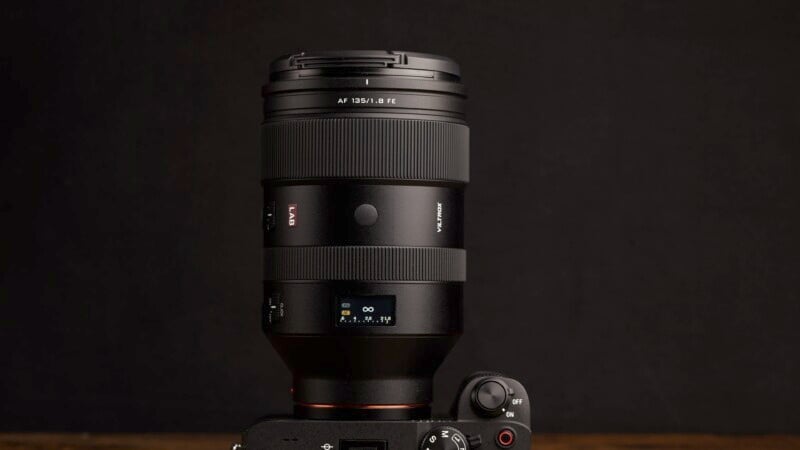 The Viltrox may not be that much wider in diameter than other 135mm lenses, but it’s much longer physically.
The Viltrox may not be that much wider in diameter than other 135mm lenses, but it’s much longer physically. We decided to go on a road trip to the cabin for New Years.
We decided to go on a road trip to the cabin for New Years.Viltrox LAB 135mm f/1.8 Review: How it Feels
How the Viltrox feels is heavy as hell. At 45.9 ounces (1,300 grams), the Viltrox weighs the same as a professional 70-200 f/2.8 lens. The weight isn’t untenable, but you feel it after a day of shooting. However, the immense physical dimensions are difficult to manage sometimes, and my rather slender fingers were uncomfortably squeezed between the body and lens. The front of the lens requires an 82mm filter, although this is on par with the G Master as well.
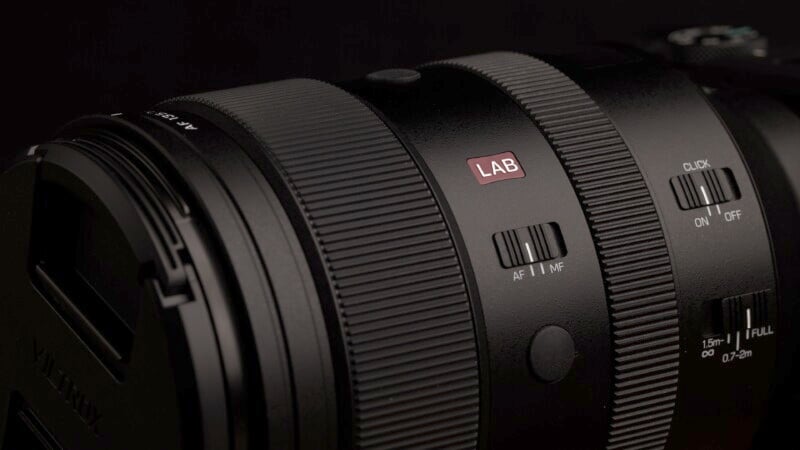 The LAB series promises to be the best Viltrox has to offer.
The LAB series promises to be the best Viltrox has to offer. LoCA is minimal but present. However, the results are similar to those of the far more expensive Sony G Master.
LoCA is minimal but present. However, the results are similar to those of the far more expensive Sony G Master.The manual focus ring is smooth, and I had no issues getting precise focus. There is a simple AF/MF switch, a focus limiter, and two customizable buttons as well. The top of the lens features an LCD, which gives a distance scale, focus distance, and aperture scale. The lag isn’t too bad, and the display is easy to see, but there is no option to display a depth-of-field indication. Overall, the lens feels very solid and well-built, and the lens has full weather seals throughout.
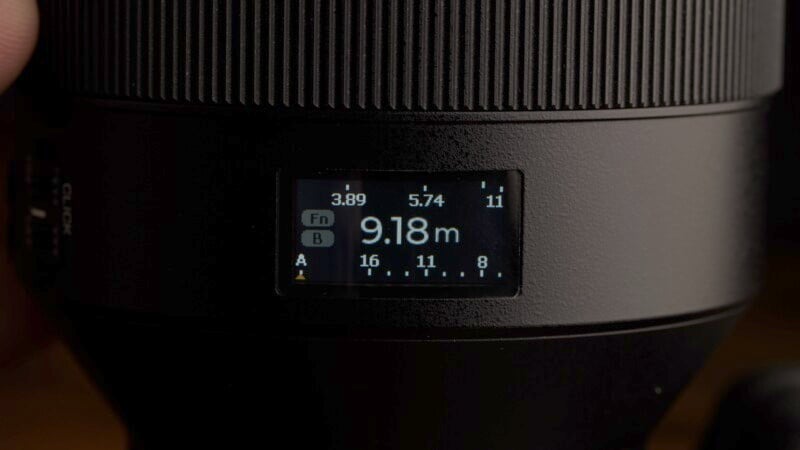 The LCD panel provides distance and aperture information. It’s a nice touch, but I would have been okay with printed indicators.
The LCD panel provides distance and aperture information. It’s a nice touch, but I would have been okay with printed indicators.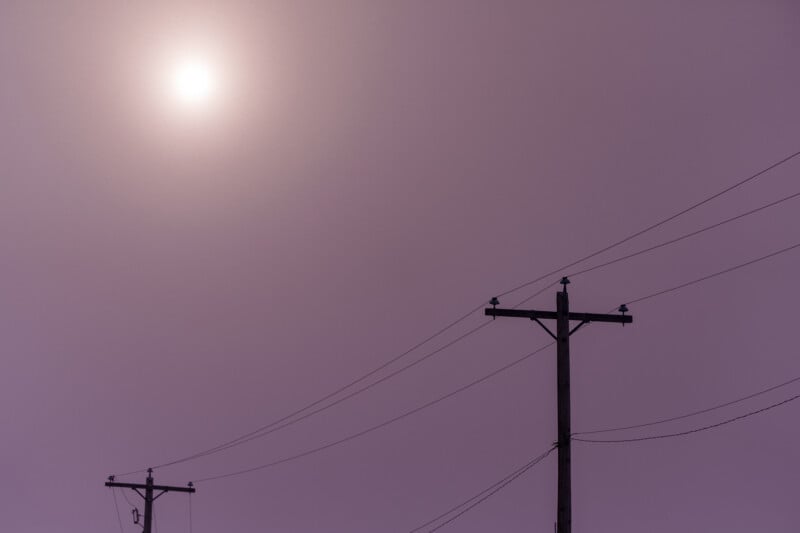 Sometimes it’s nice to keep things simple. A 135mm focal length may not be as versatile as an 85mm lens, but it has its own charm.
Sometimes it’s nice to keep things simple. A 135mm focal length may not be as versatile as an 85mm lens, but it has its own charm.I was disappointed with the aperture ring, however, because the click-stops are poorly indexed, and it takes two to three clicks for every half-stop of aperture. This is imprecise and annoying, and I’m not sure why Viltrox chose to do this. One click per half or third stop increment would be far more a usable. You can set the ring to turn smoothly; this is the one time I might prefer to do this instead.
If the aperture ring is turned all the way to the right, it engages the auto aperture, where the body now controls the setting. However, there is no locking switch or even hard click to ensure that the setting stays in position, so if you make any slight turn of the ring, you will unexpectedly be shooting at a very tight aperture instead.
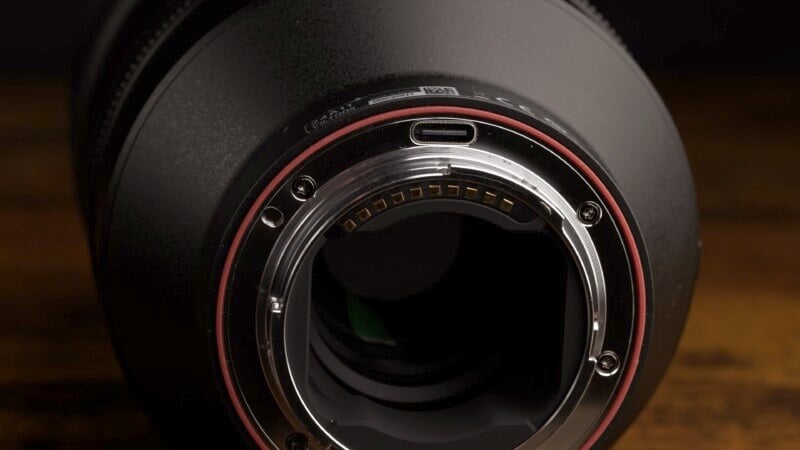 Viltrox placed the USB-C port in the lens mount so it is protected from the elements.
Viltrox placed the USB-C port in the lens mount so it is protected from the elements. The autofocus performance on the new LAB 135mm was suitable for most quick action situations.
The autofocus performance on the new LAB 135mm was suitable for most quick action situations.Viltrox LAB 135mm f/1.8 Review: How it Shoots
Inside the 135mm lens, you’ll find twin VCM motors, which create a slight whirring sound while focusing but are quick and accurate. I still think the Sony focuses faster and is the better choice if you want to shoot a lot of specific fast action. For portraits, it is a non-issue. All of Sony’s advanced in-camera autofocusing modes worked flawlessly with the Viltrox.
 The close-up performance is excellent on the Viltrox 135mm with stunningly good sharpness at minimum distance.
The close-up performance is excellent on the Viltrox 135mm with stunningly good sharpness at minimum distance.The macro capability on any fast portrait prime lens is not stellar, but the Viltrox can achieve a 1:4 life-size reproduction ratio. It focuses down to about 28 inches (0.7 meters), providing plenty of working distance, and is excellent for tight portrait details like the eyes. Most importantly, the results are still very sharp when the Viltrox 135mm is at its minimum distance.
 I can use the 135mm lens to get tight compositions of just the eyes.
I can use the 135mm lens to get tight compositions of just the eyes.The lens exhibits the occasional flare and ghosting, but it’s nothing major, and there is a little bit of LoCA to be found as well. This LoCA shows a slight blue/yellow split between the background and foreground, but the amount is minor, and the Sony G Master suffers a similar amount.
Bokeh was particularly nice, thanks to an 11-bladed aperture. There is a little cat’s eye at f/1.8, and this goes away completely by f/2.8. Specular highlights are nice and round, with no onion rings and only a slight soap bubble effect. Overall, I found the bokeh smooth and pleasant, which is essential for a shallow depth of field lens like the 135mm.
 You can see a little cat’s eye in the corners, and if you don’t like it the lens is cleaner looking at f/2.8.
You can see a little cat’s eye in the corners, and if you don’t like it the lens is cleaner looking at f/2.8. Studio flash is an effective way to maximize sharpness.
Studio flash is an effective way to maximize sharpness.The sharpness of the Viltrox 135mm f/1.8 LAB lens really impressed me. At f/1.8, the center is bright, contrasty, and sharp. Stopping down the lens has a minimal effect because it is already so good when wide open.
As for the corners, there is some vignetting at f/1.8, but the detail is good, albeit softer than the center. Stopping down to f/4 makes the vignetting go away and sharpens the lens in the corners. To keep it simple, the Viltrox is on par with the Sony 135mm f/1.8 GM.
 The sharpness is as good as anything you’ll find from the OEM companies.
The sharpness is as good as anything you’ll find from the OEM companies. The Viltrox 135mm is a fantastic portrait lens outdoors where you have lots of space to work with. You can see the beautiful softness of the background as well.
The Viltrox 135mm is a fantastic portrait lens outdoors where you have lots of space to work with. You can see the beautiful softness of the background as well.Viltrox LAB 135mm f/1.8 Review: Optical Excellence on a Budget
Viltrox has managed to make a lens that easily competes against the best in the business for an impressively low price. About the only thing the lens gives up is some questionable design choices with the aperture ring and a much larger and heavier body. I’d happily use the Viltrox for any photography due to the excellent optical performance, but I didn’t enjoy the experience of cramped fingers and a cramped arm. At a price of $899, as long as the extra size doesn’t bother you, there is no denying the incredible value this lens represents.
 It’s a good lens but the size is a little prohibitive. It’s fine to carry around, but you may wish it was smaller and lighter.
It’s a good lens but the size is a little prohibitive. It’s fine to carry around, but you may wish it was smaller and lighter. Of course, an f/1.8 aperture is bright enough for low-light situations and interior photography.
Of course, an f/1.8 aperture is bright enough for low-light situations and interior photography.Are There Alternatives?
The Viltrox is currently only made for Sony E-Mount. The Sony 135mm f/1.8 GM is an excellent lens but the price is much higher. Samyang also makes an affordable 135mm f/1.8 lens, which I haven’t had the chance to test.
Should You Buy It?
Yes. The optics are incredibly good for the money, and the lens functions pretty well. I hope that a version in the future will be further refined, but this current lens is excellent value no matter how you slice it.






 English (US) ·
English (US) ·